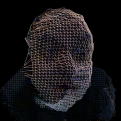Project Design & Maintenance
-
Similar Content
-
- 7 replies
- 4,632 views
-
- 3 replies
- 4,569 views
-
How do you organize your custom error code files?
By A Scottish moose,
- errors
- custom error codes
- (and 1 more)
- 11 replies
- 8,693 views
-
- 0 replies
- 3,063 views
-
- 6 replies
- 6,105 views
-




Recommended Posts
Join the conversation
You can post now and register later. If you have an account, sign in now to post with your account.